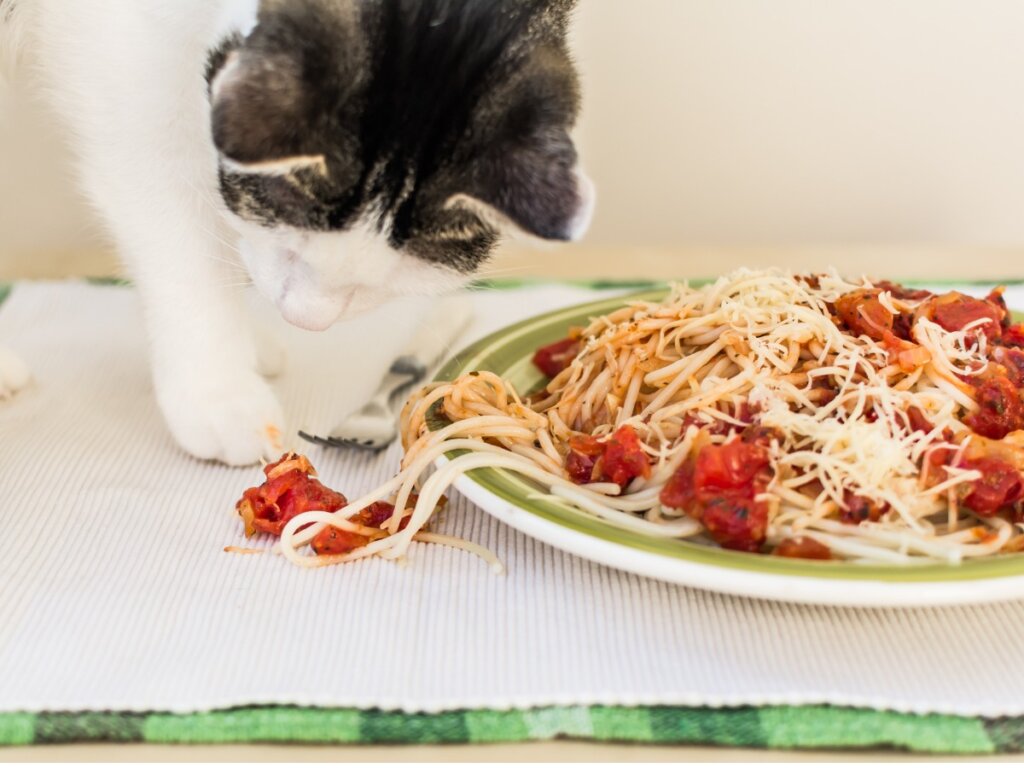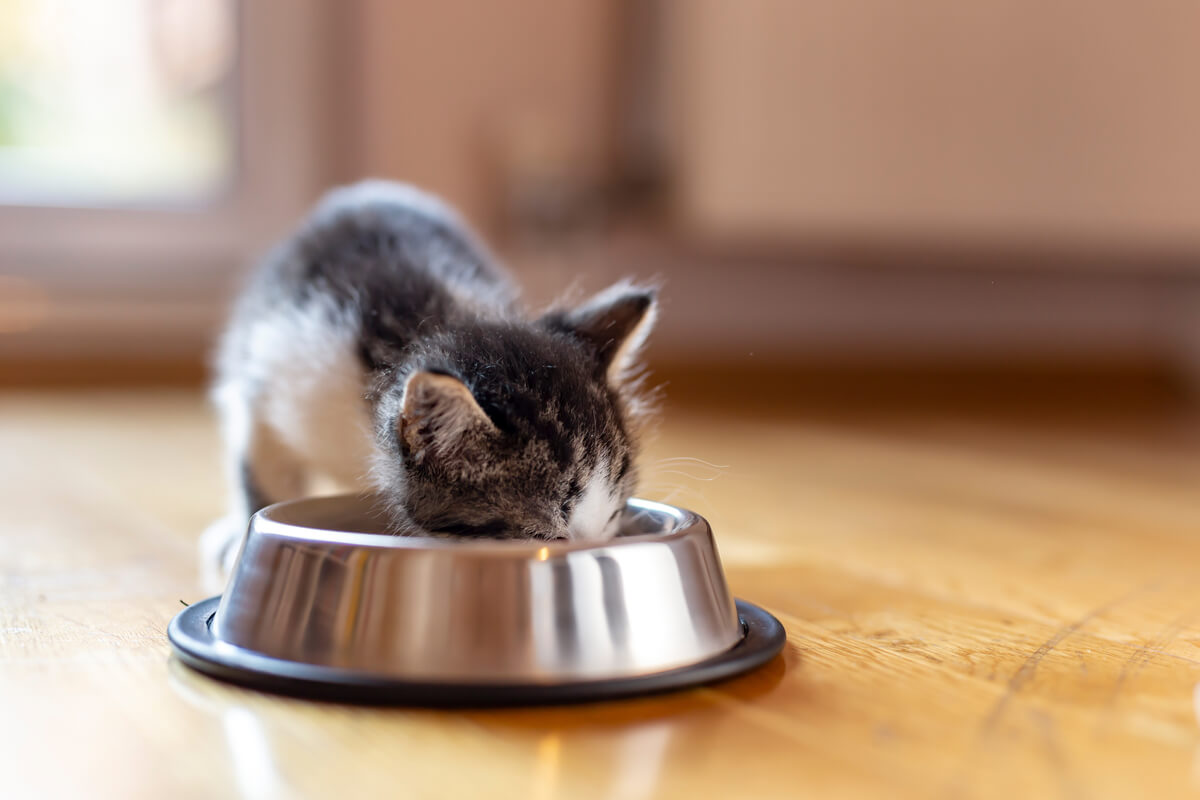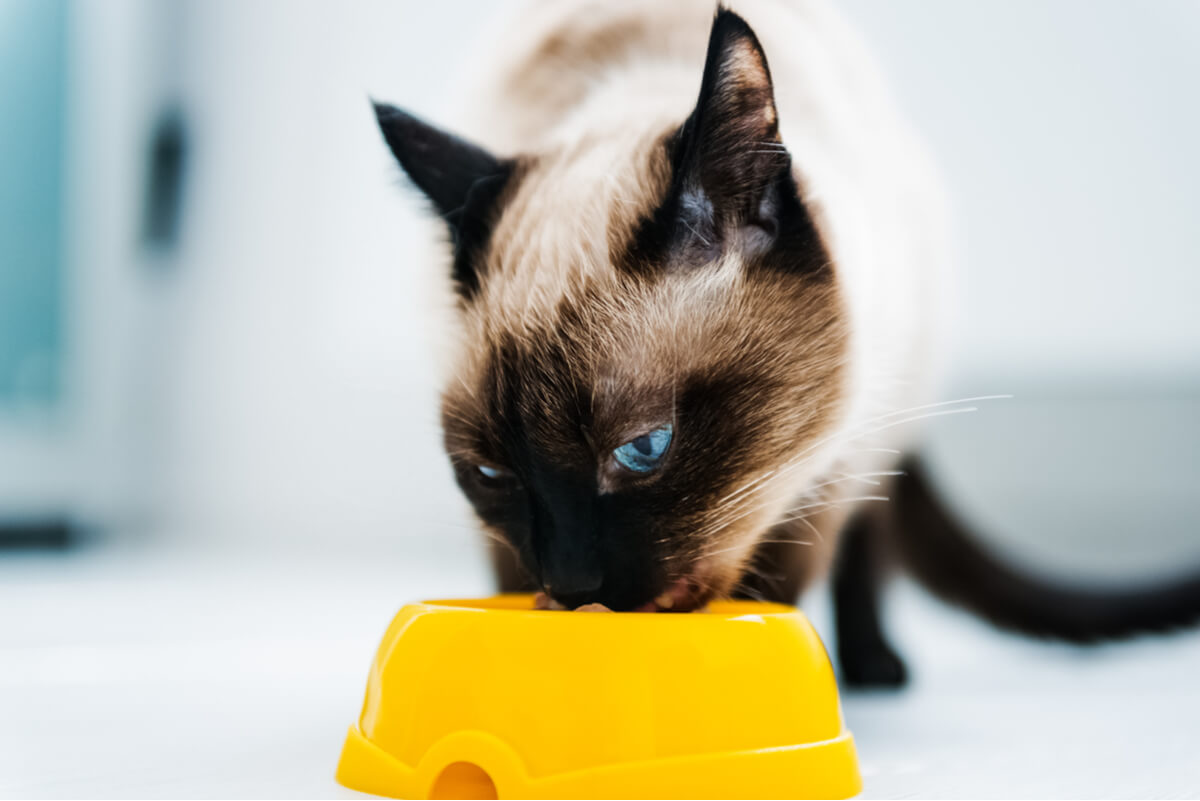Should Cats Eat Pasta?
Cats can eat pasta, but they would never actually encounter this food in the natural environment. Being carnivorous animals, they have no need to turn to carbohydrates for energy.

Human beings love pasta by nature, as it’s an excellent source of energy with a very pleasant taste. 50 to 60% of a person’s daily caloric intake should come from carbohydrate-rich foods, including cereals, bread, pasta, rice, root vegetables, and some fruits. However, do you think cats should eat pasta?
Without any real malicious intent, owners tend to humanize their pets. In the process, they may give the pet some food that they think is good for them, but they may actually be causing long-term intestinal problems for the animal. In the following lines, we’ll have a look at whether pasta is a suitable dish for cats. Don’t miss it!
The optimal diet for cats
As studies indicate, cats are undoubtedly carnivorous animals. This means that their primary source of energy is protein, present in the form of the muscle tissue, organs, and skin of the prey they consume. To give you an idea, a mouse is 56% protein and 23.6% fat: the perfect prey for a hungry feline.
Due to their obligatory carnivorous nature – unlike dogs, which are facultative carnivores – the diet of cats should have a minimum of 25% protein, ideally 55%. The other 25-40% of the remaining energy is obtained in the form of fat, and it’s better if it comes from natural sources. As we’ll see later on, cats don’t actually need to eat carbohydrates.
Furthermore, cats — unlike humans — are not capable of synthesizing taurine, an essential amino acid for the functioning of the vertebrate body. Many types of meat and fish are rich in this compound – yet another reason why meat cannot be missing from the diet of any domestic cat.
If the feline is on a diet low in taurine, it can develop heart muscle problems and immunosuppression.

Should cats eat pasta?
As the document Focus On Nutrition from the Purina company indicates, cats can consume carbohydrates, but they don’t need them in their diet. If we consider that 75 out of every 100 grams of pasta are pure carbohydrates, the question already answers itself. Put simply and quickly: you don’t need to offer pasta to a cat.
Curiously, cats don’t use cereals, pasta, and bread as energy sources, but these compounds are often included in commercial feed to lower costs. The aforementioned source estimates that the rate of digestion of these foods in the digestive system of a feline exceeds 90%. This means that cats have become well used to these foods.
So, a cat doesn’t need pasta to supplement its diet, but nothing bad should happen if you give it to them sporadically. In any case, it should never be abused, as every owner will understand that a feline would never find these foods in its natural environment.
How to give your cat pasta
The best way to offer pasta to a cat is boiled, without any seasoning. Salt, garlic, sauces, and other human-friendly seasonings can wreak havoc on feline health, so they should never be added to the dish. Neither is it suitable to give the feline instant noodles and other processed ones, as they contain high amounts of sodium.
In addition, studies highlight that carbohydrates could promote the appearance of diabetes in the animal. While this has been shown when simple sugars (carbohydrates) are constantly administered to the cat, the effect hasn’t yet been proven with complex carbohydrates, such as those found in rice, bread, or pasta.
Can cats eat pasta with tomato?
Based on the same premise above, we recommend that the pasta isn’t seasoned with any type of seasonings. What in our eyes is a harmless processed sauce, actually contains a high amount of salts, additives and unnecessary calories. In addition, according to the ASPCA group, the tomato plant has solanine, an active ingredient that’s toxic to dogs, cats and horses.

An unnecessary nutritional addition
Cats can eat pasta, but with all the information collected, it seems that its effect on the body is at least neutral, and in the worst case, negative. Therefore, we don’t recommend adding this food to the animal’s diet. Even though for humans it may be a delicious dish, you must remember that a cat would never eat spaghetti in its natural environment.
If you want to vary your cat’s diet, then we encourage you to give it raw meat – as long as it has been subjected to strict sanitary control. It can also be partially cooked or prepared in the form of stews suitable for pets. These animals are strict carnivores, so protein should be the main source of energy in all cases, without exception.

